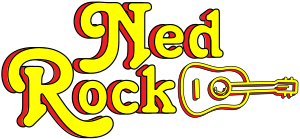Pat Garrett and Billy the Kid
Pat Garrett and Billy the Kid (106 minutes) 1973/Rated R – starring James Coburn, Kris Kristofferson, Richard Jaeckel, Katy Jurado, Chill Wills, Jason Robards, Bob Dylan. Directed by Sam Peckinpah. Available through MGM/UA Home Video.
1881 New Mexico. An era filled with hardened, angry men. Violent gunfights on saloon steps. Posses pursuing outlaws. And Bob Dylan. Huh? For “Pat Garrett and Billy the Kid,” balletic, blood-spatter maestro Sam Peckinpah listened to Dylan’s song about Billy the Kid and felt not only the tune but the tunesmith would be right for his film. The influential rocker’s musician pal, Kris Kristofferson, who was slated to play the part of Billy, had screened a print of Sam’s previous ode to the dying west, “The Wild Bunch,” for Dylan. The kings of folk-rock and manly oaters found they had a mutual respect for each other’s talents and soon teamed up for this classic morality play about honor amongst friends.
As outlaw-turned-lawman Pat Garrett, James Coburn is tasked by rich cattlemen to bring his friend, William Bonney, aka Billy the Kid, to justice. With his wearied face and laconic demeanor, Coburn resonates in his reluctant role of executioner. The story is simple: Garrett tracks down all of the Kid’s gang to find his prey’s whereabouts and winds up eliminating every member as he relentlessly stalks the notorious outlaw. Although spare in story, it is the blunt honesty each scene delivers that raises this western to classic status.
Kris Kristofferson certainly established himself as a first class actor with this film. One particular standout moment occurs when Kristofferson stops in on a family’s home for dinner and finds a lawman, Jack Elam, also eating at their table. The palpable tension is handled with such maturity, as we realize these two will have to shoot it out once they step outside after dinner. The two of them try to figure a way out of their showdown, Kristofferson winds up having to shoot Elam, yet he stays a moment to tenderly comfort the lawman as he lies dying. There are many scenes like this which show Peckinpah at the top of his game, extracting winning performances from the film’s who’s-who of western character actors like Dub Taylor, L.Q. Jones, Slim Pickens, Matt Clark and Elisha Cook Jr.
As for Dylan, he plays Alias, a printer who hangs up his smock to become a member of the Kid’s gang. Bob grins mischievously like a Bohemian choirboy and mumbles one- sentence responses throughout the film. When asked who he is, Dylan snaps back, “That’s a good question,” and this dodginess exemplifies his character’s enigmatic purpose in the story. Although it’s never clear why Dylan’s Alias suddenly chooses to ride with the Kid, it’s a presumption that he will eventually write a piece on the outlaw’s exploits. Given Bob’s few line readings, it’s difficult to tell whether he would make a good actor outside of this brief role. His impish qualities and reserved manner, however, served the part well. And the use of his carousing songs of life on the border help establish a gritty, well-worn tone to the old west trappings.
With Peckinpah’s usual slo-mo violence, male bonding, and final rolls in the hay with easy women (one of them being singer Rita Coolidge), this film could’ve easily been seen as a retread of “The Wild Bunch” or even “The Ballad of Cable Hogue.” But “Pat Garrett and Billy the Kid” stands on its own as a worthy dissertation on the integrity and noble codes of the American West legend.
© 2000 Ned Truslow

Comments are now closed.